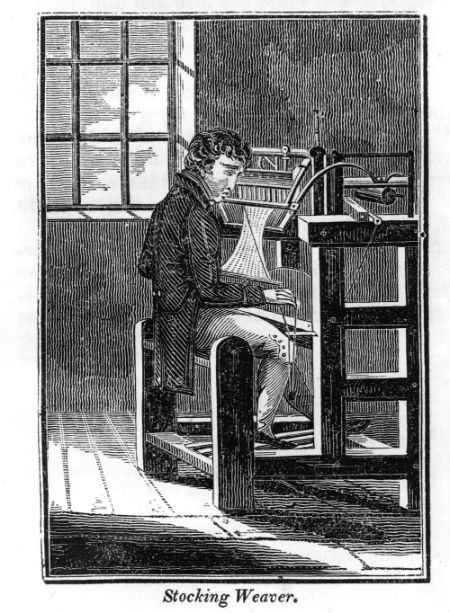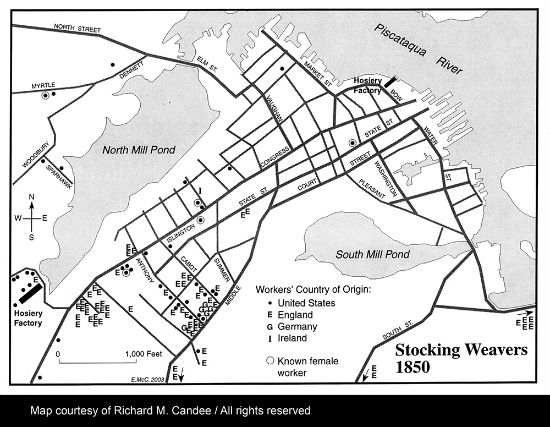Portsmouth’s Forgotten Textile Industry
TMS always learns something interesting about Portsmouth when we publish a post from J. Dennis Robinson, our guest historical contributor. Last time we learned about the building that presently houses our offices when it was part of the Eldredge Brewing Company ; this time we learned more about its earlier history in the textile industry.
In our last history installment we learned that the site of the modern TMS Architects offices was once a brewery. Heman (not Herman) Eldredge and his sons ran the Eldredge Brewing Company on the same spot off Bartlett Street in the second half of the 19th century. Although their brew, including Portsmouth Ale, was hugely popular, the Eldredge brand was drowned out by the even greater success of the Frank Jones Brewery just across the tracks in the city’s West End.
But there’s more. The brewery was built on the site of an equally important, but now forgotten, textile factory. Yes, during the 1800s, Portsmouth was also known as a key city for the production of stockings. Who knew?
Extensive research by Prof. Richard Candee indicates that Portsmouth’s hosiery production was second only to that of Philadelphia back in the day. Loom or “hand-frame” operators from Britain migrated to New England in the early 1800s, bringing with them the carefully guarded secrets of the European machinery.
A failed factory in Ipswich, MA led to a number of trained workers moving north to Portsmouth, NH. Some operated looms in their homes, while others clustered in two factories. One was located off Bow Street by the waterfront. The other site, later the Eldredge Brewery, is now home to TMS Architects. Portsmouth-based inventors also designed and patented knitting machines that expanded and sped up the manufacture of stockings during the rise of the Industrial Revolution.
The Stocking and Yarn Factory was located on Islington Creek (today Bartlett & Cate streets) in 1834. When that factory burned five years later, it was replaced under new owners as part of the Rockingham Steam Factory. Some 220 men, women, girls, and boys eventually found employment at this company, working directly at the factory or from their home as “seamers and finishers.” Up to 1,200 pairs of stockings could be manufactured per week. All the goods of both plants were sent to one merchant whose Boston shop was marked by a giant six-foot tall stocking that served unmistakably as the company’s sign.
Prof. Candee created a map that shows the location of the local and newly arrived European families that worked here in the stocking trade. His extensive study was published in the Fall/Winter 2002 issue of Historic New Hampshire in an article entitled “Old Portsmouth, Home of the Stocking Business.”
For a while Portsmouth “seamers” made a living stitching together the manufactured red halves of hosiery made in larger New England factories. But eventually the Portsmouth stocking market crashed. By the turn of the 20th century, with the rise of automatic seamless stocking machines, the outsourcing stopped. Portsmouth lost its last link to the industry that had flourished here, an industry Portsmouth inventors had helped to create, and is now an all but forgotten chapter in the city’s history.
J. Dennis Robinson is editor and owner of the popular Web site SeacoastNH.com and author of 12 books about history. His latest release is MYSTERY ON THE ISLES OF SHOALS: Case Closed on the Smuttynose Island Ax Murders of 1873. You can follow his history postings on Facebook.







